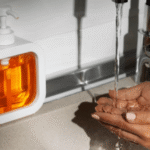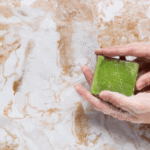For generations, Swarfega has stood as a name synonymous with industrial-strength cleanliness, particularly for those whose hands bear the marks of manual labor. Whether mechanics covered in engine grease, machinists dealing with cutting oils, or gardeners with soil embedded deep into their skin, this green gel has been the trusted solution. Searchers wanting to understand “Swarfega” are usually seeking clarity on what it is, why it remains significant, and how it functions both historically and today. In simple terms, Swarfega is a heavy-duty hand cleaner designed to remove substances that ordinary soap cannot tackle. It is not merely a cleaning product but a cultural icon of resilience in workshops, factories, and homes.
What makes Swarfega especially fascinating is its story of endurance and adaptation. First introduced in the mid-20th century, it was revolutionary in replacing harsh solvents and abrasives with a safer, more skin-friendly formula. Mechanics, engineers, and artisans who once resorted to turpentine or paraffin to scrub away grime found in Swarfega a product that protected their skin while delivering unmatched cleaning power. Over decades, its distinctive green color, unique gel texture, and unmistakable scent became etched into memory. This introduction sets the stage for a deeper look into how Swarfega originated, how it works, the science behind its cleaning action, and why it continues to remain relevant in an age of countless alternatives. “It is not just about cleaning hands,” as one engineer once said, “it is about the pride of restoring them to their true state.”
The Origins of Swarfega
Swarfega was invented in 1947 by Audley Bowdler Williamson, a chemist who recognized the severe skin problems faced by industrial workers in post-war Britain. During that era, workers regularly used harsh solvents like paraffin, kerosene, or benzene to remove industrial grease. These not only stripped away grime but also damaged the skin, leaving it cracked, raw, and prone to long-term conditions such as dermatitis. Williamson’s genius was in formulating a product that could cut through grease without harming skin integrity.
The name itself has a practical etymology. “Swarf” refers to the small shavings, chips, or oily debris left behind after machining or grinding metal, while “ega” is shorthand for “eagerly” or “effectively.” Together, the brand name communicated exactly what it delivered: a substance capable of eagerly removing swarf. Over time, its green gel texture became iconic, distinguishing it from soaps and pastes that either crumbled or irritated skin. By the 1950s, Swarfega was already being stocked in garages, factories, and farms across the UK. It transformed into more than a product; it was a solution that carried social and industrial importance.
The Science Behind Swarfega’s Cleaning Power
Unlike ordinary soaps that rely on simple surfactants, Swarfega uses a blend of emulsifying agents and oils to tackle grease at the molecular level. Its core function is to break down hydrophobic substances—like petroleum, engine oil, tar, or industrial lubricants—that resist water-based cleaners. By surrounding grease molecules with emulsifiers, it enables them to disperse in water, allowing grime to wash away easily.
This mechanism prevents the need for abrasive scrubbing or the use of solvents that strip natural oils from the skin. Swarfega’s formula incorporates skin conditioners that balance its strength with gentleness. In practical terms, it ensures that after repeated use, workers do not suffer from drying or cracking of the hands. The green coloration was more than cosmetic; it was deliberately chosen to set it apart visually, making it recognizable on a crowded workshop shelf. Today, even as formulations evolve, the product retains its hallmark gel-like texture, offering controlled application and reduced waste.
Swarfega in Everyday Use
The product’s applications span beyond factories and garages. Farmers use it to remove animal fats, gardeners for stubborn soil stains, and artists for paint or ink residues. Its ability to work without the need for water in certain cases made it especially popular in outdoor or workshop environments where sinks were not always nearby. A mechanic might keep a tub of Swarfega next to his toolbox, knowing that it was indispensable at the end of a long shift.
Interestingly, it also became a household name. Families with members who worked industrial jobs often stocked Swarfega at home to keep dirt from spreading beyond workshops. Its role as a bridge between industrial necessity and domestic life explains why its popularity transcended occupational boundaries. “There was always a green tub in my father’s shed,” recalls one craftsman, “and the smell of Swarfega meant the day’s labor was truly done.”
Comparison of Cleaning Solutions
| Cleaner Type | Strength in Removing Grease | Skin Friendliness | Common Use Cases | Longevity of Effect |
|---|---|---|---|---|
| Ordinary Soap | Low | High | Household dirt | Short-term |
| Solvent Cleaners | Very High | Low | Industrial grease | Harsh on skin |
| Abrasive Hand Scrubs | Moderate to High | Moderate | Paint, adhesives | Medium |
| Swarfega Gel | High | High | Oil, grease, tar | Long-lasting relief |
This table illustrates how Swarfega manages to balance efficiency and skin care where other cleaners often fail.
Cultural Impact of Swarfega
Few cleaning products achieve cultural recognition, yet Swarfega is deeply ingrained in memory across working-class Britain and beyond. It became part of the language of labor, often referenced in anecdotes, advertisements, and workplace humor. Generations of mechanics remember the green gel as much as they remember their tools. Its use was not simply practical but ritualistic: finishing a shift often ended with the cleansing satisfaction of Swarfega.
The company capitalized on this recognition by marketing Swarfega as more than a cleaner. Its advertisements highlighted safety, care for workers’ hands, and the importance of maintaining professional pride. It became, in effect, a symbol of respect for manual laborers. Over time, its influence spread internationally, particularly to Commonwealth countries where British industrial products held sway. Even today, collectors find vintage Swarfega tins or tubs and consider them artifacts of industrial heritage.
Modern Variations and Product Range
Over the years, Swarfega evolved into a broader product line that includes heavy-duty wipes, shower gels, and industrial-strength barrier creams. These extensions aimed to maintain relevance in modern workplaces where hygiene regulations and worker safety standards have advanced significantly. The classic gel remains central, but its variants address niche needs, such as removing adhesives, inks, or chemical residues.
One reason for its endurance is adaptability. The company understood that industrial labor changed dramatically with technology. Machines grew more advanced, materials more diverse, and workplaces more regulated. By creating formulations aligned with these changes, Swarfega preserved its brand identity while meeting contemporary demands. It demonstrates how a product anchored in tradition can remain indispensable by embracing innovation.
Benefits of Swarfega in Professional Settings
| Benefit | Description |
|---|---|
| Skin Protection | Formulated with conditioners to minimize irritation and dryness. |
| Efficiency | Quickly removes heavy grease, tar, and industrial oils. |
| Versatility | Suitable for mechanics, engineers, farmers, and hobbyists alike. |
| Economic Value | Concentrated gel reduces wastage and lasts longer than liquid soaps. |
| Cultural Familiarity | Trusted product with decades of workplace recognition. |
This balance of benefits explains why Swarfega remains a preferred choice even when faced with numerous modern competitors.
Environmental Considerations
Modern consumers are increasingly aware of environmental impact, and Swarfega has adapted accordingly. Unlike many solvent-based cleaners, its formulas today are biodegradable, aligning with eco-friendly standards. This adaptation matters in industries where wastewater management and compliance with environmental laws are strict. While the green color remains symbolic, the product’s sustainability has shifted from marketing to necessity. Industrial users now value products that meet environmental audits without compromising performance.
Conclusion: Swarfega’s Lasting Relevance
Swarfega is not just a relic of post-war industrial Britain but an enduring symbol of practicality, resilience, and respect for labor. Its story reflects the evolution of workplace culture: from a time when workers endured cracked, solvent-burned hands to an era where product design respects human health. Its continued relevance lies in its adaptability, balancing industrial strength with environmental responsibility. “Hands tell the story of work,” one mechanic once said, “and Swarfega keeps that story clean.”
For anyone curious about what Swarfega is, why it matters, and how it remains effective, the answer lies not just in its formula but in its identity. It is a product that solved a real problem and never lost touch with its roots. In workshops, sheds, and factories around the world, the green gel still sits quietly, waiting to restore the dignity of clean hands after a hard day’s work.
FAQs
Q1: What makes Swarfega different from ordinary soap?
Swarfega is formulated specifically to remove grease, oil, and industrial residues that resist ordinary soap. Its emulsifying agents break down substances that water-based cleaners cannot, making it indispensable for heavy-duty tasks.
Q2: Can Swarfega damage skin after long-term use?
Unlike harsh solvents, Swarfega includes skin conditioners designed to minimize irritation. When used properly, it protects rather than harms skin. However, individuals with sensitive skin should still test small quantities before regular use.
Q3: Is Swarfega safe for household use?
Yes, it is safe for household applications such as cleaning paint, ink, or gardening stains. Many families keep it for stubborn messes, though it is primarily designed for industrial contexts.
Q4: How has Swarfega adapted to modern workplace needs?
The brand expanded its product line to include wipes, barrier creams, and eco-friendly formulas, ensuring relevance in regulated industries that demand worker safety and environmental responsibility.
Q5: Where does Swarfega stand in the global market today?
Though originally British, Swarfega has found global markets, especially in industries that rely on manual labor. Its reputation as a trusted, skin-friendly solution secures its place even amid international competition.











